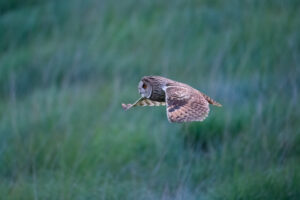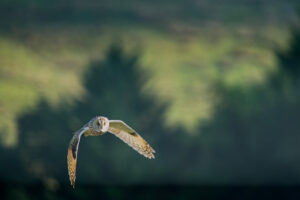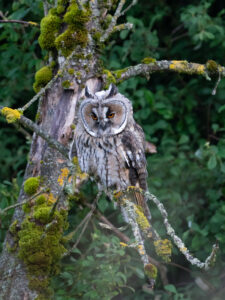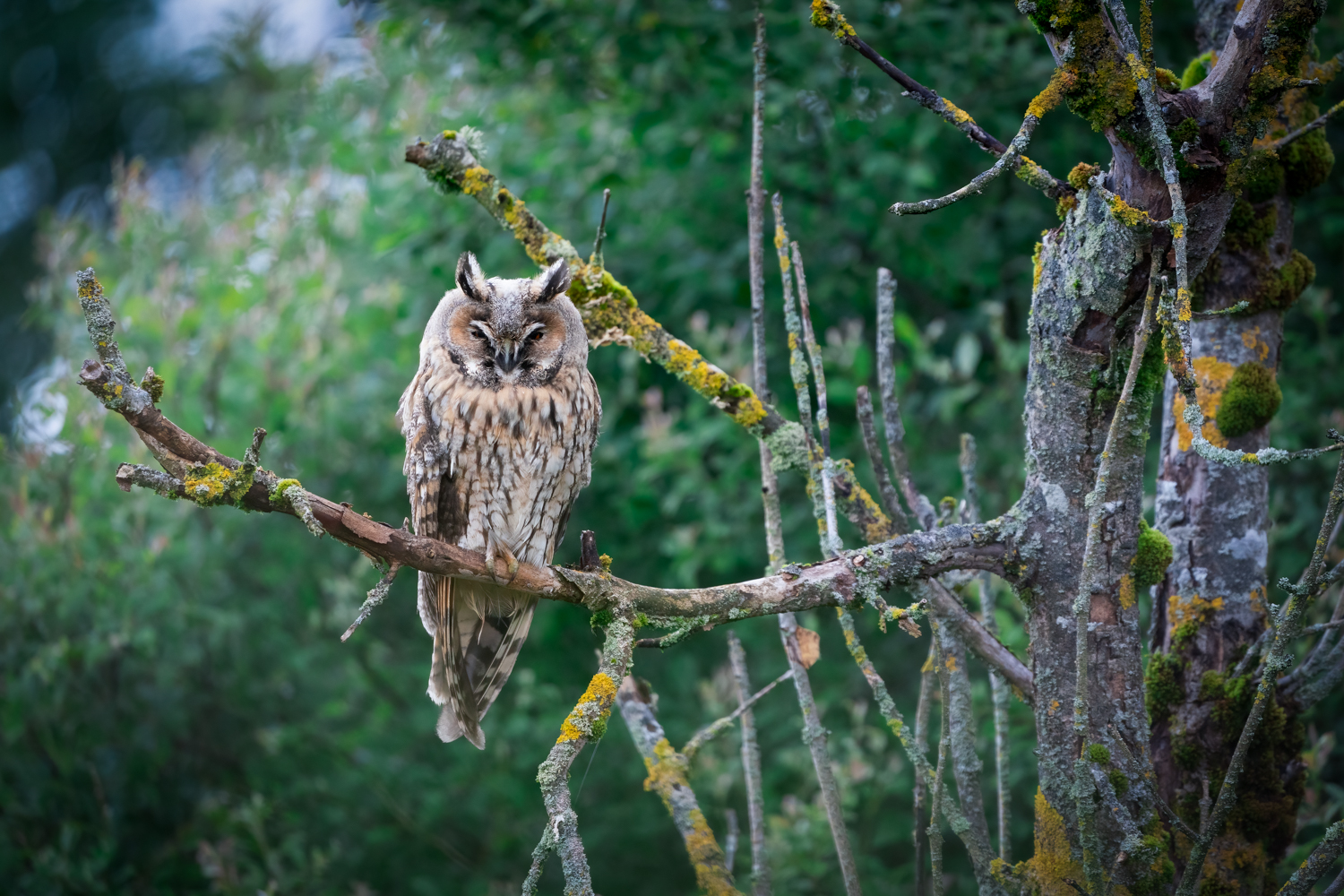Of an early morning, amber eyes flit over dew-soaked meadows, wings buzzing quietly over thistle and grass, lifting, lowering, catching the breeze.

Late of an evening, golden light catches on honeycomb wings. Often a shadow, now here, then gone, the long-eared owl is the elusive woodland royalty of Britain.

Catching voles beyond a dry-stone wall as the sun filters through their feathers, they glide over moorland and field to the distant calling of their young.

As the owls are hunting, the voles scampering and the deer peeking from behind shrubbery, the sun sets to provide the golden glow fanned by the bird’s wings. The slow passing of the light’s strength, the intensifying of colours before fading into pastels are part of the evening’s, the owl’s and my story.

And when the chicks grow, they figure out the ways of an owl, to fly, to hide, to perch to match their forest home.

In late summer, when the woods are changing – lichen turns ochre and gold, cobwebs trap dewdrops in the morning -the owl blends in with bark, amber eyes like gemstones in the forest’s crown. The young are now part of their habitat’s fabric to spin their tales along.

